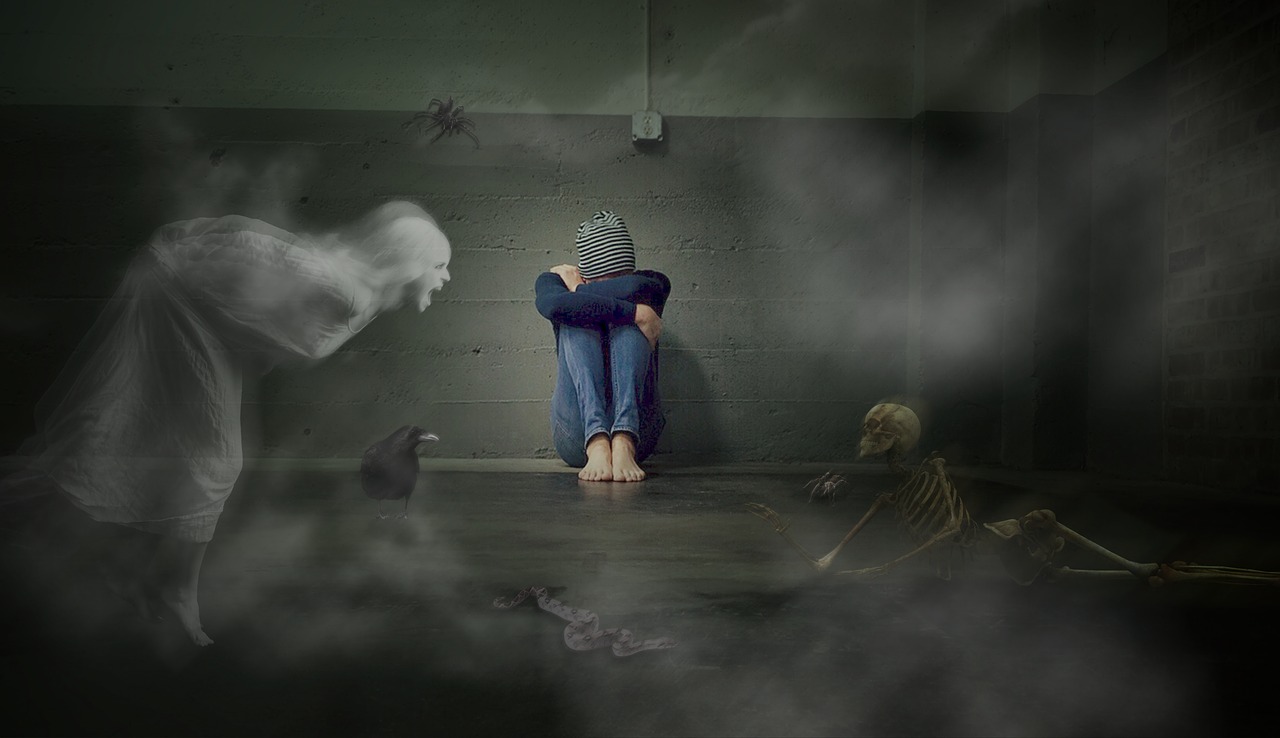In the sixth part of this article series, we will comprehensively explore the critical aspects encompassing mental health, social implications, and mass psychogenic illness (MPI) that can result from serial poisoning incidents.
Once again, we would like to emphasise the primary objective of IIPHA, which is to thoroughly investigate and analyse the potential factors contributing to mass poisoning incidents among Iranian students. Our approach is firmly grounded in evidence-based research and draws upon information gathered from victims and healthcare professionals. We acknowledge that our access to laboratory examinations and direct patient contact is limited. Therefore, the reports we present rely solely on credible scientific sources that discuss the known and identified gases and other related poisonous substances up to the present time.
Read more:
Analytical Report Of Serial Poisoning Of Iranian Students (Part 1: Introduction)
Analytical Report Of Serial Poisoning Of Iranian Students (Part 2: Plausible Candidates)
During times of social crisis, such as natural disasters, war crimes, terror attacks, and similar incidents, it is crucial to recognise that psychological harms and disorders are just as significant and concerning as physical fatalities. In these circumstances, the prevalence of anxiety, stress, and other related psychological tensions can give rise to specific physical symptoms primarily attributed to the psychological impacts experienced. It is important to note that these effects extend beyond the immediate victims to include individuals in the surrounding community who may not have been physically affected.
The emergence of MPI is one of the concerns raised in the aftermath of mass poisoning incidents among Iranian students. Numerous Iranian authorities have acknowledged external factors as the cause of the students’ poisoning. In response, they have proposed the formation of a “Truth-Seeking Committee” tasked with conducting expert assessments and analyses to identify the specific poisons used in the school attacks and determine the individuals involved. However, it is essential to acknowledge that despite these promises and commitments to conduct thorough investigations into recent catastrophes, no tangible action has been taken, and no official reports have been released. Consequently, the question arises as to the extent to which the casualties are related to MPI, if at all, or if they are genuinely a result of the presence of chemical substances.

It would be impossible and pointless to address this matter prior to a preliminary perception of the ongoing crisis in Iran:
First and foremost, a significant legitimacy crisis cannot be overlooked. The “Woman, Life, Freedom” movement once again reminisces that Iranian citizens have lost trust in government authorities, particularly when sharing news and information. This lack of trust has deep roots in the history of the Iranian government, with corruption, disregard for expert knowledge, and the promotion of incompetence due to the cultural revolution being a longstanding concern.
Furthermore, the Iranian authorities’ lack of transparency and the classification of public health data as confidential or classified information contribute to the doubts surrounding the reliability and clarity of the information supplied. This further erodes trust in the information shared by the authorities. Considering the aforementioned factors, it is essential to highlight that making assumptions about a “psychosomatics collective disorder” without access to physical and chemical analyses of potential causes related to the poisonings is misleading and dangerous. Such assumptions carry significant ethical and clinical implications.
It is crucial to emphasise the importance of relying on empirical evidence and scientific analysis to draw accurate conclusions rather than speculative assumptions that can potentially harm individuals and hinder the understanding of the situation. Given the complex socio-political landscape and the trust deficit between the Iranian population and the government, it is imperative to prioritise transparency, accountability, and the pursuit of objective scientific investigations to shed light on the mass poisonings and ensure the well-being of the affected individuals and the broader community.
Based on the available evidence and the magnitude of the mass poisoning incident, it is imperative to consider the situation carefully. Referring to this tragedy and a crime against humanity as “Collective Hysteria” is historically debatable and invalid. This terminology fails to acknowledge the misogynistic impacts associated with such characterisations, which have been consistently condemned and criticised in the field of psychology. It disregards the traumatic socio-political context of this crisis and overlooks the fact that psychological and physical symptoms can coexist and do not necessarily negate the presence of poisoning.
Recognising that the symptoms experienced in such situations can have psychological and physical manifestations is essential. Therefore, it is crucial to avoid dismissing the possibility of poisoning and to approach the matter comprehensively, understanding the potential factors involved. By doing so, we can ensure a more accurate and compassionate assessment of the situation while respecting the complexity of the crisis and its impact on individuals. With respect to the available evidence and given the scales of the matter which confirm the existence of chemical substances as a result of mass poisoning, feminising this tragedy and a crime against humanity by utilising phrases such as ‘Collective Hysteria’ is historically debatable and invalid.
It is essential to recognise that such terminology is not rooted in factual evidence or an accurate understanding of the situation at hand. Furthermore, it raises concerns regarding the intentions of the Iranian government in creating a climate of collective fear through a lack of transparency and failure to take decisive actions. At this juncture, it is crucial to consider the motivations behind linking the mass poisoning incidents to a supposed “psychosomatics collective disorder”, whether intentionally or unintentionally. By doing so, we can assess the potential implications of these actions on the ongoing research into mass poisoning and the pursuit of justice and accountability from the responsible authorities.
By engaging in such unfounded speculations, the credibility and legitimacy of the research may be undermined, hindering the quest for truth and justice. It is imperative for responsible authorities to prioritise transparency, scientific rigour, and unbiased investigations to ensure that the outcomes of the research are reliable and trustworthy and lead to appropriate accountability measures. Understanding the implications of these actions is crucial for advancing knowledge, protecting the affected individuals’ rights, and establishing a just and accountable response to mass poisoning incidents.

The current priority is to prioritise the safety and well-being of the students affected by the mass poisoning incidents and advocate for an independent investigation into the matter by international bodies and entities. The discussion surrounding MPI has existed for centuries, originating from diverse cultures and environments. However, it has seldom been addressed in medical and clinical education. Differentiating this disorder from bioterrorism, infectious disease outbreaks, or exposure to intense toxins/poisons can be challenging.
Episodes of psychosomatics collective disorder often attract media attention and can significantly impact public health, social well-being, and the economy. The accurate identification, addressing, and response to such cases by medical professionals, experts, and rescuers play a crucial role in understanding the implications of the matter. It is essential to recognise that devaluing health and well-being issues during disease and crisis outbreaks are a typical strategy governments employ to downplay public concerns and divert attention from their mismanagement, corruption, and injustice. Additionally, they may attempt to portray such tragedies as non-political in order to absolve themselves of responsibility.
By highlighting these dynamics, we can emphasise the importance of maintaining a critical perspective, advocating for comprehensive investigations, and challenging attempts to downplay the gravity of the situation. This is crucial for promoting transparency, accountability, and the pursuit of justice in the face of such crises.
Throughout history, there have been numerous instances where politicians have attempted to downplay general social problems and struggles by attributing them to psychological issues instead of taking responsibility. Examples of this can be seen in the political justifications surrounding events such as Covid-19, HIV, and other contagious diseases. It is important to note that MPI, before being considered a medical diagnosis, is primarily an observation made from an epidemiological and social standpoint. In other words, this condition is not classified or defined as a specific illness in official resources, including diagnostic and statistical manuals for psychiatric disorders. This recognition highlights the need to critically assess the motives behind attempts to classify complex social issues solely as psychological disorders.
It is crucial to prioritise evidence-based approaches and avoid simplifying complex problems by attributing them solely to individual mental health. This ensures a more comprehensive understanding of the challenges at hand and enables us to address them effectively. To address the issues related to psychic harm, it is crucial to consider that any potential exposure to unknown chemical substances naturally induces anxiety. While it may not be possible to confidently discuss specific types and quantities of gases used due to limited access to victims and laboratory samples, statements from victims and health workers suggest the possibility of low-dose chemical substances such as nerve agents, organophosphates, or respiratory stimulants being involved.
In any country or society, relevant bodies and entities must conduct a thorough assessment to identify and analyse the specific types and quantities of chemicals used. The findings should then be shared with the public in a transparent manner. Unsurprisingly, medical professionals and health workers may struggle to provide the best course of action without transparency, security concerns, conflicts, and the presence of contradictory information. This lack of information has significantly heightened concerns and anxiety among students, parents, and health workers, as they grapple with insufficient knowledge about the nature of the incident, potential treatments, and the shock of being exposed to chemical substances. Efforts should be made to prioritise transparency, open communication, and the dissemination of accurate information to alleviate anxiety, promote public understanding, and facilitate appropriate response and care for those affected.
The information on this topic is subject to change as new evidence emerges, and the report will be updated accordingly.
